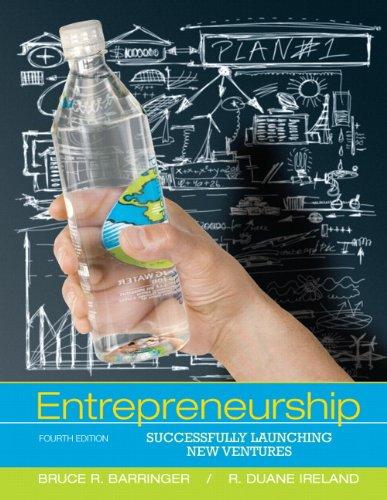Most everyone is familiar with Angry Birds, the video game in which players use a slingshot to
Question:
Most everyone is familiar with Angry Birds, the video game in which players use a slingshot to launch birds at pigs stationed on or within various structures. The goal is to destroy all the pigs on the playfield. Inspired by a sketch of stylized wingless birds, the game was first released for the Apple iPhone in December 2009. Since then it has been widely popular and its creator, Finland-based Rovio Mobile, has created versions of Angry Birds for the Android operating system and other platforms. While it’s hard to know for sure why Angry Birds has been such a success, it’s been praised for its successful combination of addictive game play, comical style, and low price (99 cents per download).
Across all platforms, Angry Birds has been downloaded more than 100 million times, making it one of the most successful electronic games in history. In fact, the birds in the game, outfitted with different colors and destructive capability, have become cultural icons. They have been made into plush toys, which sell for $12 to $15 each, and Rovio Mobile is thinking about creating a children’s cartoon series focused on the birds.
Impressive, isn’t it? The company behind Angry Birds, Rovio Mobile, was started in 2003 by three students, Niklas Hed, Jarno Vakevainen, and Kim Dikert, from Helsinki University of Technology (now called Aalto University School of Science and Technology) in Finland.
While still in school, the three entered a mobile game development contest sponsored by Nokia and HP. Their entry, a multiplayer game named “King of the Cabbage World,” won the contest, which prompted the three to start a company to make mobile games. Incredibly, from 2003 until 2009, Rovio Mobile produced 51 electronic games, none of which were a hit. Angry Birds was its 52nd release. To say that the three entrepreneurs were persistent is a true understatement!
The same year Rovio Mobile started, Jason Donahue and Ben Rubin, two students at Brown University, launched Zeo, formerly known as Axon Labs. Looking for ways to fight grogginess and help people feel more alert, Donahue and Rubin found that the stage of sleep from which a person awakens has a major effect on how that person feels during the day. So Zeo was launched to help people track the quality of their sleep and awaken at the ideal time. To do this, Zeo created an alarm clock and related accessories that monitor sleep states. The state of sleep is detected by a headband that the user wears while sleeping. A bedside base unit monitors the state of sleep and awakens the sleeper during the last light sleep before the desired waking time. A complementary personal sleep coaching service, in the form of a Web-based platform, helps users measure and analyze their sleep patterns, and makes recommendations for how to improve the quality of their sleep.
The Zeo system is dependent on both software and hardware, both of which were built from scratch by Donahue and Rubin. An initial prototype was built, and the two then started cold-calling entrepreneurs in their area who had built a physical product to get their advice on how to proceed. One person they targeted was Colin Angle, the CEO of iRobot, the maker of the popular Roomba robotic vacuum cleaner. Getting Angle on the phone wasn’t easy. Donahue and Rubin called a number of times and got to know Angle’s secretary. They were repeatedly told he wasn’t available, but were polite, and always asked if it was okay to call again. One day, while driving home from a meeting, they tried again and boom—
their call was put through. They got five minutes of Angle’s attention and convinced him to meet with them. Angle eventually became a Zeo adviser and then a board member, and was instrumental in introducing Donahue and Rubin to Chinese manufacturers who now produce the hardware portion of Zeo’s products. Donahue and Rubin have publicly commented that Zeo wouldn’t have been possible without Angle’s involvement and advice.
Questions for Critical Thinking
1. Contrast Rovio Mobile with YouCastr, the company featured in this chapter’s “What Went Wrong” feature.
Why do you think Rovio Mobile survived and is now thriving while YouCastr failed?
2. Why do you think Angry Birds has been so successful?
3. Do you think you’d be able to “hang in there” as long as the founders of Rovio Mobile did? Would you have been able to keep picking up the phone and calling Colin Angle’s office, even after being repeatedly told he wasn’t available? What are the keys to remaining “tenacious” when things take longer than planned?
4. Although the case doesn’t provide specific information to help you answer these questions, give them a stab anyway. Why do you think the founders of Rovio Mobile stuck with their company as long as they did? Wouldn’t it have made perfect sense for them to throw in the towel before they got to release number 52, which turned out to be Angry Birds?
Similarly, why do you think Donahue and Rubin kept calling Colin Angle?
Step by Step Answer:

Entrepreneurship Successfully Launching New Ventures
ISBN: 9780132555524
4th Edition
Authors: Bruce R. Barringer, R. Duane Ireland





